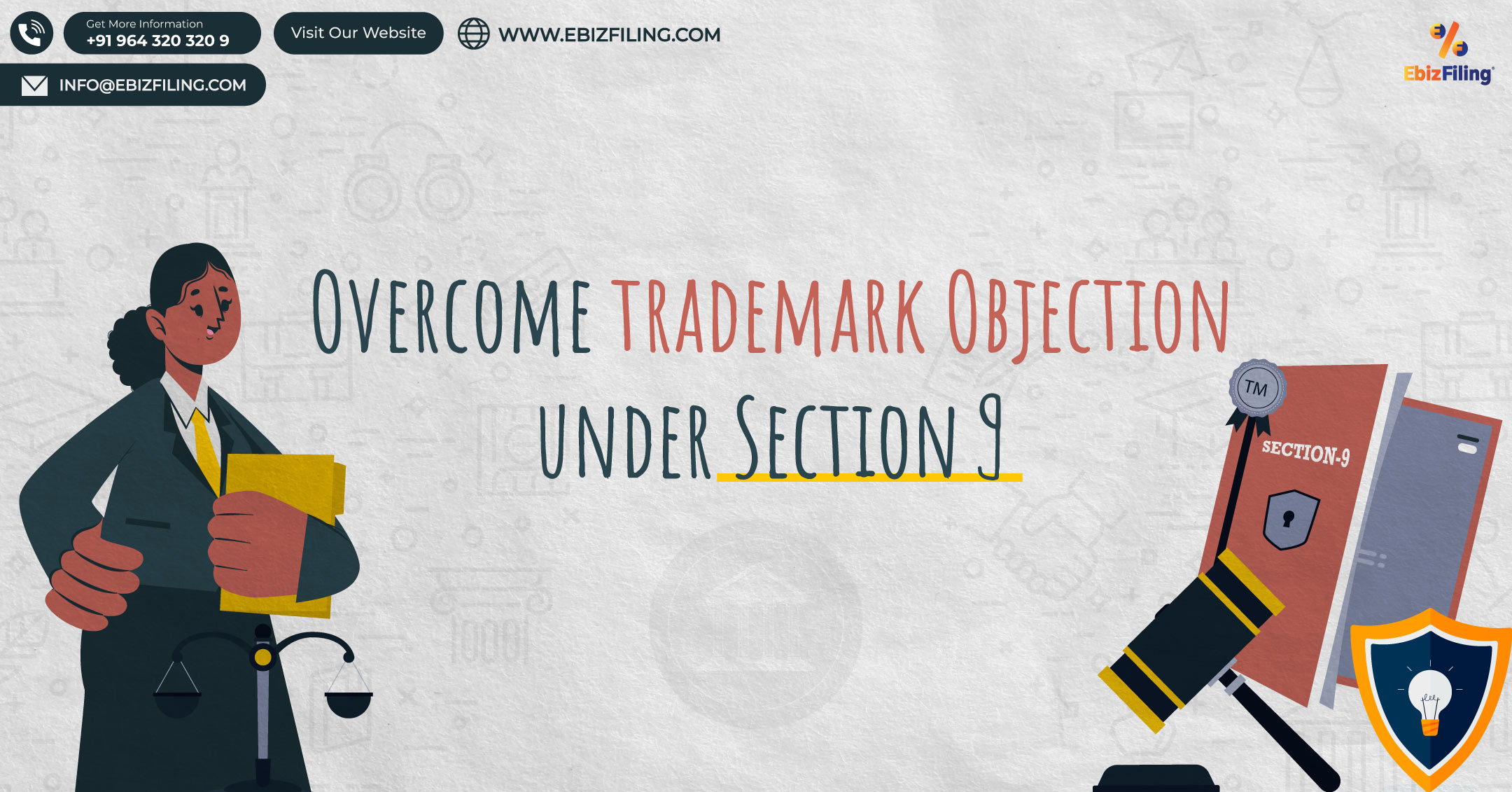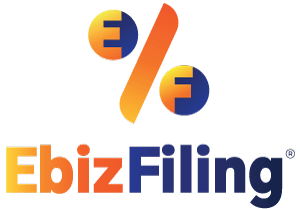
-
March 11, 2023
How to overcome a trademark objection in Section 9?
Table of Content
Introduction
An application for trademark registration can be objected to on two grounds that are absolute grounds and relative grounds. The absolute grounds for refusal of trademarks are specified under Section 9 and the relative grounds for refusal of trademarks like clashes with previous trademarks, well-known marks, or because it is barred from being registered under Section 11. But the grounds specified under section 9 can be overcome in some ways. In this blog, we will focus on the ways to overcome the trademark objection given under Section 9, i.e., on absolute grounds.
What is a trademark objection?
When a candidate applies for trademark registration, the examiner reviews the information to confirm the validity of the trademark. If the trademark examiner raises any objection against the application for whatever reason, the registrar will ask for a reply against the objection raises. Generally, it is a third party that opposes trademark registration.
Grounds for refusal of the trademark under Section 9
An applicant may encounter the following grounds for refusal of a trademark under Section 9:
A. Marks that are devoid of any distinctive character
This means all marks are not capable of having a distinguished identity in the market because they are very common to the public. Marks are non-distinctive when they contain only words that are widely used and have dictionary definitions. These marks usually have no unique brand identity.
B. Marks that consist of only such words that are descriptive of trade or goods being provided
The best way to explain this trademark objection under Section 9 is through the example of Apple Inc. If Apple Inc. sold apples instead of electronic products, they would have come across this objection while getting their brand registered. This is the most common absolute ground for refusal of trademark registration, covered under Section 9(1) (b) of the Trademark Act, 1999.
C. Trademarks that consist of words and designs which have become customary in the course of trade
An example of this can be the mark “Xerox,” which has now become customary and a substitute for the word ‘photocopying’. However, since the Xerox owners have been using the mark for a long time, it has become a well-known mark.
D. Capable of confusing the public
For example, if someone applies for registration of the mark “Adidas,” it is very likely to confuse the market with the well-known trademark “Adidas.” As a result, the mark that is causing such confusion is subject to trademark objection under Section 9.
E. Matter is likely to hurt the religious sentiments
India is a secular country and a lot of people have different religious beliefs. It becomes the duty of young entrepreneurs to make that extra effort to protect religious sentiments. Hence the trademark objection under Section 9 also protects religious beliefs. In 2015, the word “Ramayan” was refused for registration under class 3. The reason behind this order was that this term is associated with religious sentiments, and no individual can claim an exclusive right to such a word.
F. If the mark consists of obscene or scandalous matters or a restricted name
The Emblems and Names (Prevention of Improper Use) Act, 1950, set out a list of restricted names. No one can apply for trademark registration for any of these names. Further, any matter that is obscene or scandalous in nature is also prone to objection under Section 9.
G. Any business logo consisting of the shape of the gods with the intention of selling.
A business logo consisting of a shape or images of gods that are made to raise their purchase quantity is objected to under section 9. Such a logo will show disrespect towards gods and religious sentiments.
How to overcome a trademark objection under Section 9?
The trademark objection raised under section 9 can be overcome by taking some measures to protect your mark from being refused. They are as follows:
- Try to be unique when it comes to your brand: This is the most common suggestion to avoid trademark objection under Section 9 is to use a mark that is unique and true to your business. A unique mark will not only be registered sooner but will also leave a long-lasting impression in the industry. For example, “Nikon” for photography products such as cameras, stood as a unique and distinctive mark.
- Claim a Date: Claiming a date of prior use is a big exception to all the absolute grounds of trademark objection under Section 9. This is very helpful, especially when you are aware that your mark is not distinctive. Claiming a date of prior use means that you are letting the registry know that you have been using the mark, even before you applied for the same. This claim can help a lot of brands that have non-distinctive names register their marks. However, as soon as we hear these words, we know the two pioneer brands the speaker is talking about. This is known as “acquiring a secondary meaning.” When the generic words have a strong impact on the target market, the registry cannot refuse them based on an objection under Section 9.
- Select the most appropriate class for your business: This can be a major factor in avoiding trademark objections. When you understand how to select the most appropriate applicable class, you can easily overcome the objection under Section 9 of the Act.
- Secondary meaning in the industry: A trademark can be overcome when the mark has acquired a secondary meaning in the industry. For example, “I’m lovin’ it” or “Book my Show” are not exactly distinctive. However, we easily spot the two pioneer brands being mentioned when we hear these statements. This is referred to as “acquiring a secondary meaning.” When the generic words have such a significant influence on the target market, the registrar cannot reject them on the grounds of trademark objection under Section 9.
Bottom Line
As there are lakhs of registered trademarks in India, it is common to receive a trademark objection from the Registry. One must file a reply to the examination report within one month of receiving the objection from the Trade Marks Registry and any further delay may lead to the abandonment of the applied mark. One must keep in mind the above-mentioned points while drafting a reply to overcome the objections.
Register Your Brand
Protect your name and logo from unauthorised usage. Apply for trademark with EbizFiling at INR 6199/- only.
About Ebizfiling -





Reviews
arti ittannavr
18 Apr 2022Took trademark registration from Ebizfiling india private limited service was excellent thank you 😊
Dhanraj Bhuptani
16 May 2018They have a really good team of hardworking employees. I was guided and served very well.
Jaydip Trivedi
28 Sep 2018We are very grateful to you and your team. Thank you so much for all your efforts.
December 21, 2023 By Siddhi Jain
ભારતમાં ટ્રેડમાર્ક અસાઇનમેન્ટ પર 12 FAQs પરિચય ભારતમાં ટ્રેડમાર્ક અસાઇનમેન્ટ એ એક મહત્વપૂર્ણ પ્રક્રિયા છે જેમાં એક વ્યક્તિથી બીજામાં ટ્રેડમાર્કની માલિકીનું ટ્રાન્સફર સામેલ છે. વ્યવસાયો અને વ્યક્તિઓએ ટ્રેડમાર્ક સોંપણી પ્રક્રિયા અને તેમાં સામેલ કાયદેસરતાને સમજવાની જરૂર છે. આ લેખમાં, અમે […]
December 21, 2023 By Siddhi Jain
भारत में ट्रेडमार्क असाइनमेंट पर 12 अक्सर पूछे जाने वाले प्रश्न परिचय ट्रेडमार्क असाइनमेंट भारत में एक महत्वपूर्ण प्रक्रिया है जिसमें ट्रेडमार्क स्वामित्व का एक व्यक्ति से दूसरे व्यक्ति को हस्तांतरण शामिल है। व्यवसायों और व्यक्तियों को ट्रेडमार्क असाइनमेंट प्रक्रिया […]
November 21, 2023 By Siddhi Jain
Some FAQs on the Trademark Assignment in India Introduction Trademark assignment is an important process in India that involves the transfer of company ownership from one individual to another. It is essential for businesses and individuals to understand the trademark […]